Major chord progressions are the secret sauce that can transform your melodies from basic to magical, boring to extraordinary.
They can bring your listeners on an emotional journey, paint vivid soundscapes, and elevate your music to new heights.
In today’s article, we’re going to delve into the fascinating world of major chord progressions, dissecting them from every angle.
We’ll start with the basics, perfect for those of you just starting your music production journey, before diving deeper into the more advanced concepts that will excite even professionals.
In this comprehensive guide, we’ll explore:
- Understanding Chord Progressions ✓
- Major Chord Progressions: Breaking it Down ✓
- Common Chord Progressions ✓
- Crafting Emotion Through Chord Progressions ✓
- The Different Types of Chords ✓
- Major and Minor Chords: A Comparison ✓
- Tips and Tricks for Writing Captivating Chord Progressions ✓
By the end of this article, you’ll be equipped with the knowledge and skills to enhance your chord progressions in a major way (no pun intended).
So, let’s dive in…
Table of Contents
- Roman Numerals
- Major Chord Progressions: Breaking it Down
- Common Major Chord Progressions
- The Different Types of Chords
- Major Chords vs Minor Chords
- How to Switch Between Minor & Major Keys
- Tips & Tricks for Writing Captivating Chord Progressions
- Utilize Tension & Release
- Varying Chord Lengths & Rhythms
- Use Chord Substitutions
- Major Chord Progressions: Final Thoughts
Roman Numerals

When working with chord progressions, we use Roman numerals to denote the scale degree of the root note of each chord.
Upper case numerals represent major chords (like the C Major chord), while lower-case numerals represent minor chords (like the G minor chord).
The Roman numeral system makes it easy to transpose chord progressions to different keys without changing their overall structure.
For example, let’s look at the I-IV-V progression in C Major 一 The chords are C Major (I), F Major (IV), and G Major (V).
If you wanted to transpose this progression to G Major, we’d simply change the chords to G Major (I), C Major (IV), and D Major (V).
The structure of the progression remains the same, making it easy to experiment with different keys.
What you need to remember is that in any major key, there are seven diatonic chords built on the notes of the major scale.
For example, in C Major, the chords are:
- C Major (I)
- D minor (ii)
- E minor (iii)
- F Major (IV)
- G Major (V)
- A minor (vi)
- B diminished (vii°)
This is displayed in the picture above.
So, by memorizing the different Roman numerals (capital and lower-case) you can soon become a master of creating chord progressions of any kind.
Major Chord Progressions: Breaking it Down

Major chord progressions are essential in creating uplifting and engaging music.
They provide a strong foundation for melodies and harmonies, allowing your music to evoke powerful emotions in the listener.
By mastering major chord progressions, you’ll be able to create memorable songs that truly stick with your audience.
To create major chord progressions, do these 2 things:
- Start by choosing a key and identifying the diatonic chords within that key.
- Once you have your chords, experiment with different combinations & orders to find a progression that you like.
Remember to consider the overall structure and flow of your song as you create your major chord progression.
Make sure it complements your melody and lyrics.
Common Major Chord Progressions
Now that you’re familiar with the basics of major chord progressions, let’s check out some of the most popular major chord progressions found in (modern) music.
-
I-V-vi-IV
One of the most popular major chord progressions in modern music and pop songs, the I-V-vi-IV progression can be found in countless songs across various genres and subgenres.
This progression is often referred to as the “pop-punk progression” due to its extensive use in that genre.
However, it also transcends genre boundaries.
It’s been used in countless hits across pop, rock, and country.
In the key of C Major, this progression would be:
- C Major (I)
- G Major (V)
- A minor (vi)
- F Major (IV)
This progression has a strong sense of resolution and can be easily repeated or combined with other progressions.
It has been used in popular songs such as “No Woman, No Cry” by Bob Marley and “Closer” by The Chainsmokers.
If you’d like to learn more 6 more super powerful chord progressions to captivate your listeners and make them completely addicting, we’ve got you covered.
-
I-IV-V
The I-IV-V chord progression is arguably the most popular major chord progression in western music, particularly in blues, rock, and pop.
It’s frequently referred to as the “blues progression.”
One interesting fact is that this progression forms the basis of the 12-bar blues, a fundamental structure in blues music.
In C Major, it would be:
- C Major (I)
- F Major (IV)
- G Major (V)
This common chord progression creates that perfect combination of tension & release.
That’s why it’s perfect for ending a musical phrase or section.
This progression has been used in popular songs such as “Johnny B. Goode” by Chuck Berry and “Shape Of You” by Ed Sheeran.
-
ii-V-I
Commonly found in jazz, the ii-V-I chord progression is a staple of jazz harmony.
It’s often expanded into longer progressions using substitutions and extensions, but at its core, many jazz songs can be distilled down to variations of the ii-V-I.
In C Major, this progression consists of:
- D minor (ii)
- G Major (V)
- C Major (I)
This progression, like most common chord progressions, has a sense of tension and resolution and can be used to create a more sophisticated sound.
It has been used in popular songs such as “Fly Me to the Moon” by Frank Sinatra and “Love Yourself” by Justin Bieber.
-
I-vi-ii-V
The I-vi-ii-V chord progression is frequently used in pop and jazz music.
It’s often referred to as the “50s progression” or “doo-wop progression.”
This beautiful progression was heavily used in the doo-wop genre and countless hits from the 1950s.
In the key of C Major, this progression would be:
- C Major (I)
- A minor (vi)
- D minor (ii)
- G Major (V)
This progression has a smooth, flowing quality that can make a song sound more sophisticated and harmonically interesting.
It has been used in songs such as “No Tears Left To Cry” by Ariana Grande.
-
I-iii-IV-V
The I-iii-IV-V chord progression is another common progression that can be found in various genres.
True, it is less common in modern pop music, but you can still find it in classical music and some older pop songs, which makes it worth mentioning.
One interesting fact is that it creates a feeling of constant movement and rising tension due to the movement from the iii to the IV.
In the key of C Major, this progression would be
- C Major (I)
- E minor (iii)
- F Major (IV)
- G Major (V)
This progression creates a sense of movement and energy, making it suitable for faster tempo (upbeat) songs.
It has been used in songs like “Twist and Shout” by The Beatles and “Viva La Vida” by Coldplay.
-
I-IV-vi-V
The I-IV-vi-V chord progression is a versatile progression that can be found in many songs across different genres.
It’s been used in numerous hits and creates a melancholic or nostalgic feeling (especially when used in a major key).
An interesting fact is that this major chord progression, while common in pop, also finds its home in genres like dance and electronic music, proving its versatility.
In the key of C Major, this progression would be
- C Major (I)
- F Major (IV)
- A minor (vi)
- G Major (V)
This progression has a strong sense of resolution and can be used to create both uplifting & emotional songs.
It has been used in songs such as “Don’t Stop Believin'” by Journey and “Paparazzi” by Lady Gaga.
By learning these common major chord progressions, you can create your very own with ease and confidence.
The Different Types of Chords
Now let’s check out different types of chords, as understanding them can help you create a brilliant music.
Remember, these are the foundations, so it’s critical that you understand them in order to create a memorable chord progression.
-
Root Chord
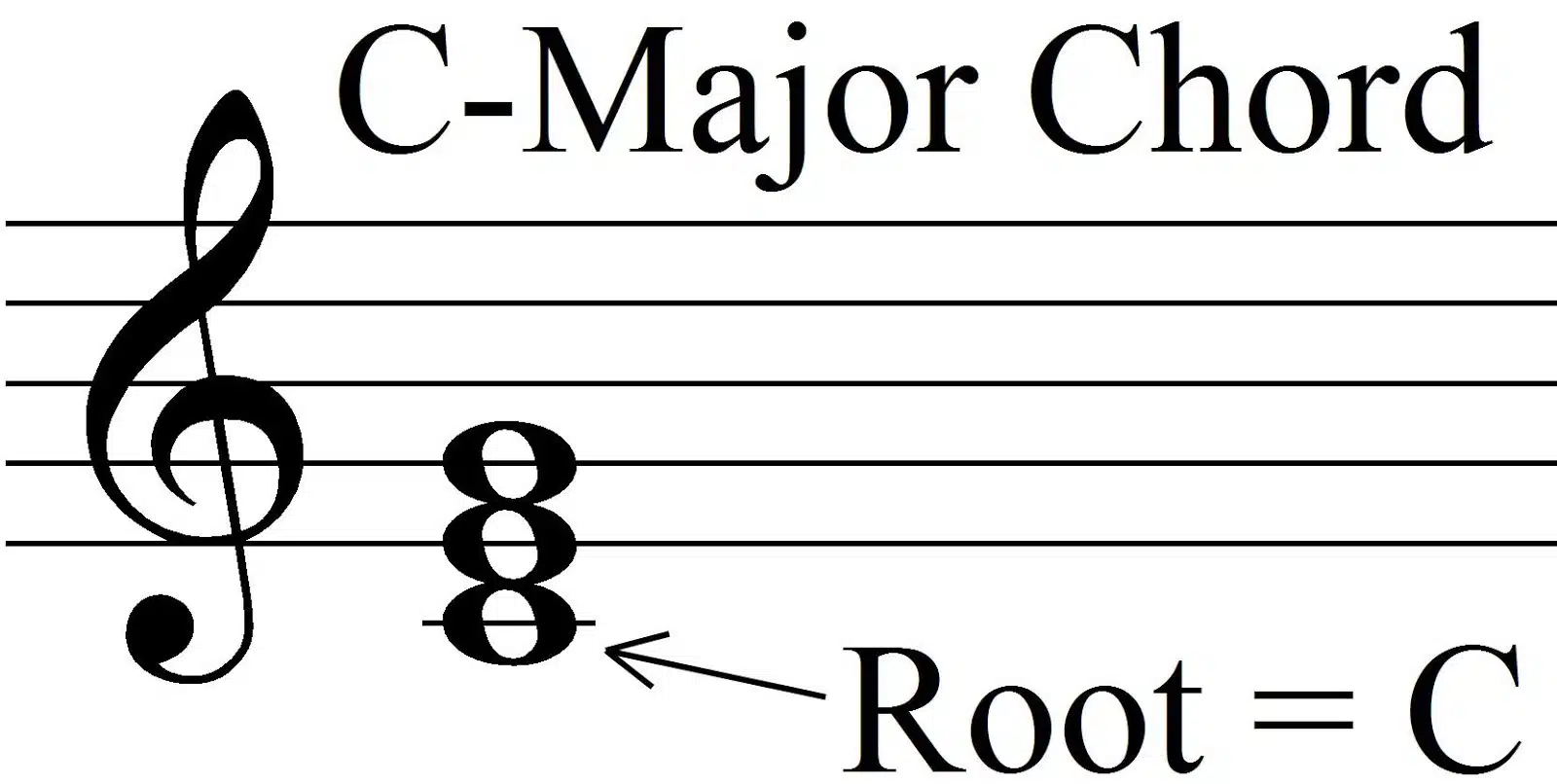
The root chord, aka the Tonic chord, is the chord built on the first note of a scale, also known as the tonic.
In the key of C Major, the root chord is C.
The root chord is essential in establishing the tonality of a song and often provides a sense of resolution in chord progressions.
Side note, if you’re looking for the 7 best hip-hop chord progressions, look no further.
-
Diatonic Chords

Diatonic chords are built from the notes of a specific major scale or minor scale.
These chords are the most common and familiar chords used in Western music.
In the key of C Major, the diatonic chords are:
- C Major
- D minor
- E minor
- F Major
- G Major
- A minor
- B diminished
By understanding how diatonic chords work within a specific key, you can create progressions that sound natural and harmonious.
-
Diminished Chords

Diminished chords are made up of three notes, with each note being a minor third apart.
These chords have a tense, dissonant sound and are typically used to create tension and suspense.
For example, the B diminished chord in the key of C Major consists of the notes C – Eb – Gb.
NOTE: Diminished chords are less common than other common chord progressions, but they can still add an interesting twist to your major chord progressions.
-
Corresponding Chords
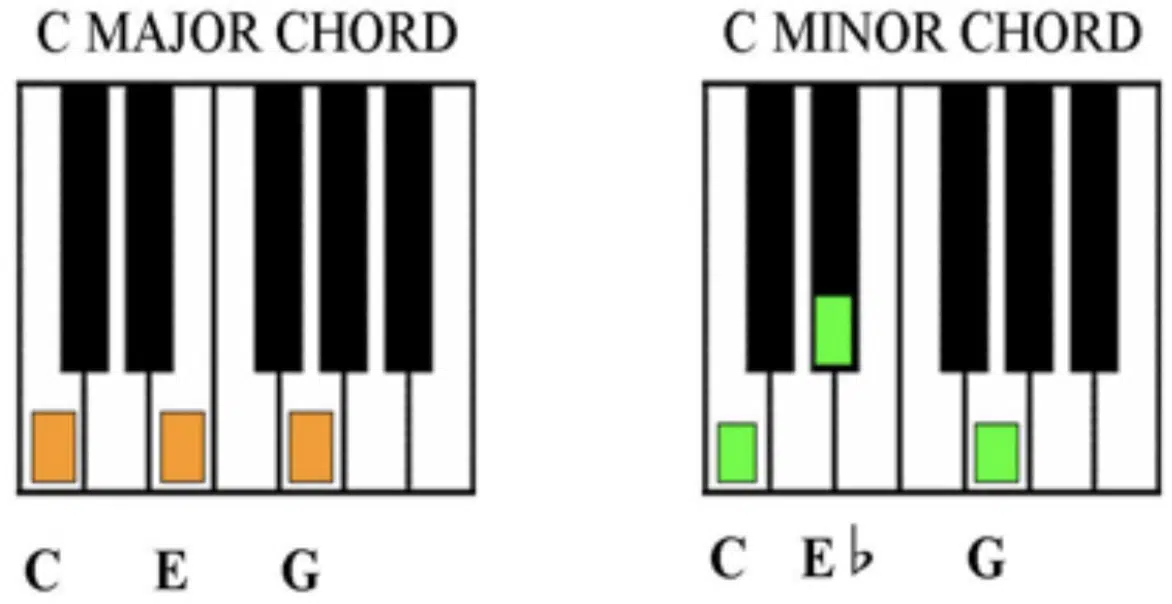
Corresponding chords are chords that share the same root note but have a different quality, such as major or minor.
For example, in the key of C Major, the corresponding chord to C Major is C minor.
By switching between corresponding chords, you can create interesting harmonic shifts and add variety to your chord progressions.
A lot of artists and producers, such as Marshmello, incorporate this technique, so you know it’s effective.
-
Dominant Chords
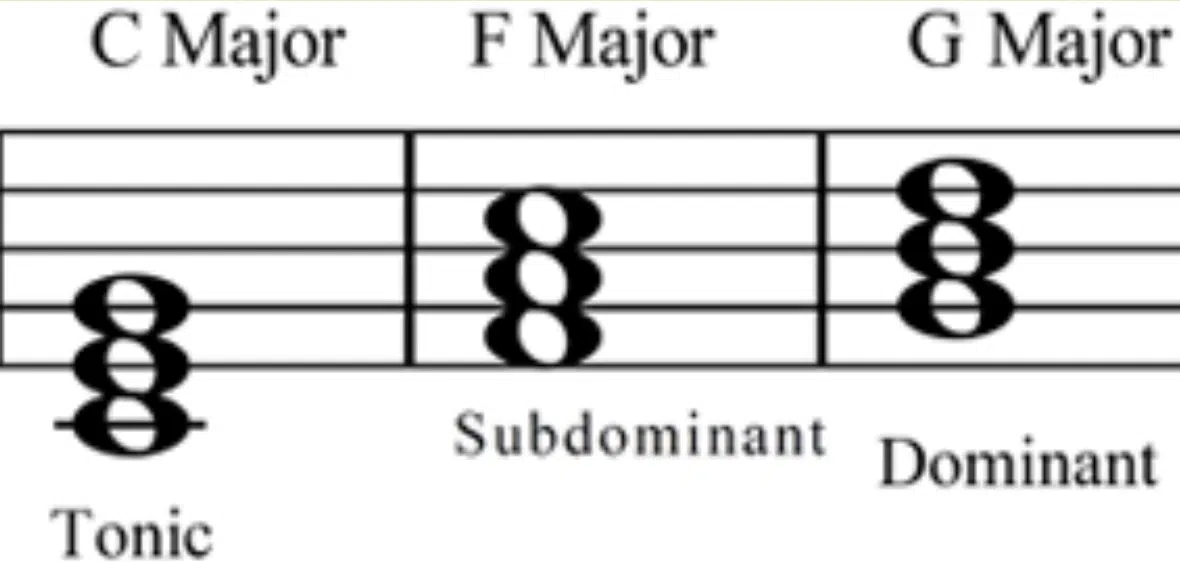
Dominant chords are built on the fifth degree of a major or minor scale and have a strong tendency to resolve back to the root chord.
In the key of C Major, the dominant chord is G Major.
Dominant chords create anticipation and intrigue.
They’re often used to build tension before resolving to the root chord, making them a crucial element in many progressions.
Major Chords vs Minor Chords
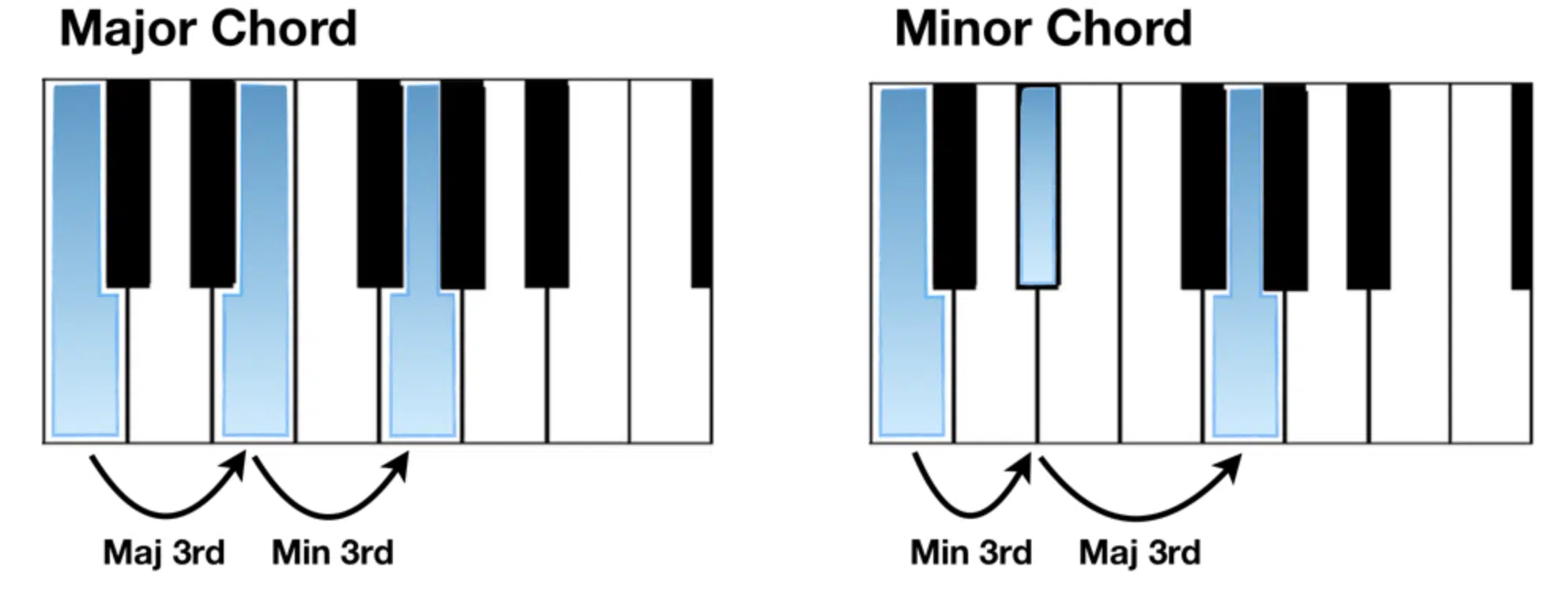
Major chords and minor chords are the two most fundamental chord types in Western music.
They create contrasting sounds and feelings, which play a significant role in shaping the overall vibe and emotion of a song.
In this section, we will delve deeper into the differences between major & minor chords and explore how these differences can impact your unique music.
- Major Chords 一 Characterized by their bright, uplifting sound, often associated with happiness and optimism.
These chords are constructed using:
- A root note
- A major third
- A perfect fifth
For example, the C Major chord consists of the notes C, E, and G.
Major chords are frequently used in pop music and are the backbone of many popular chord progressions.
- Minor Chords 一 Prevalent in various music genres, from rock to classical, and can evoke a wide range of emotions, such as sadness, melancholy, or even intensity.
They are built using:
- A root note
- A minor third
- A perfect fifth
In the case of the C minor chord, the notes are C, E♭, and G.
How to Switch Between Minor & Major Keys
Switching between major and minor keys can add variety and interest to your chord progression.
It can also help you evoke different emotions or create a sense of mystery and allure in your music.
Here’s a few of my favorite methods in which to smoothly transition between major and minor keys within your chord progressions:
-
Use Corresponding Chords
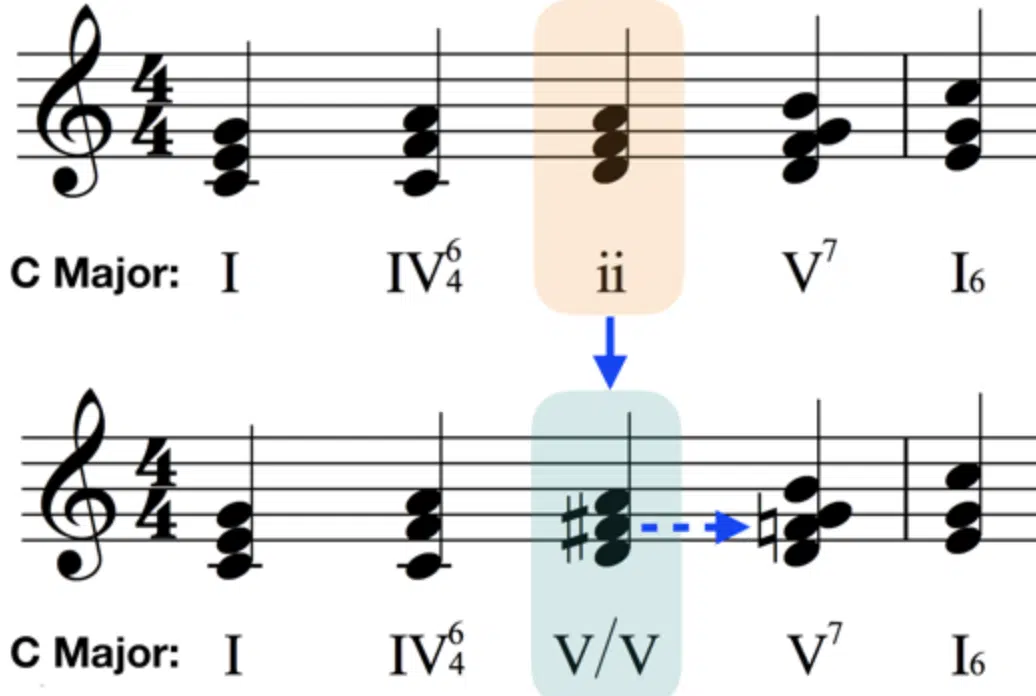
You can use corresponding chords to create smooth transitions between major and minor keys.
For instance, if you are in the key of C Major, you can use the C minor chord to transition to the key of C minor.
Interestingly, corresponding chords are heavily used in modal interchange, a technique popular in film scoring to elicit specific emotional responses.
It’s a trick used by composers like Hans Zimmer and John Williams to give their music that unforgettable cinematic quality.
-
Employ Pivot Chords
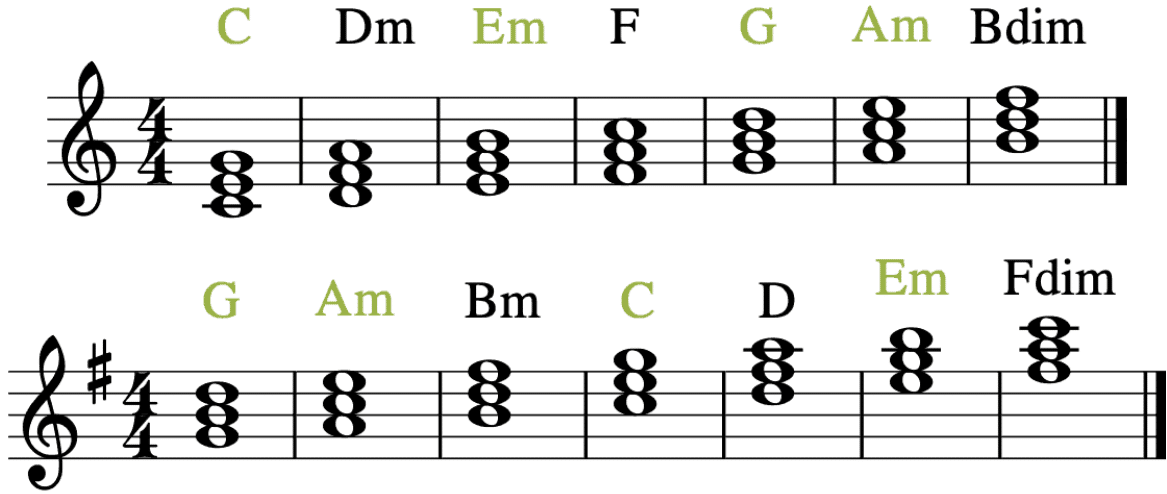
Pivot chords are chords that are common to both the original key and the new key.
For example, if you’re moving from C Major to A minor, the F Major and G Major chords are common to both keys and can be used as pivot chords.
The Beatles were known for their innovative use of pivot chords.
In their song “Penny Lane,” they used a pivot chord to modulate between keys, which added an unexpected twist and made their chord progression even more memorable and catchy.
-
Use The Relative Minor/Major
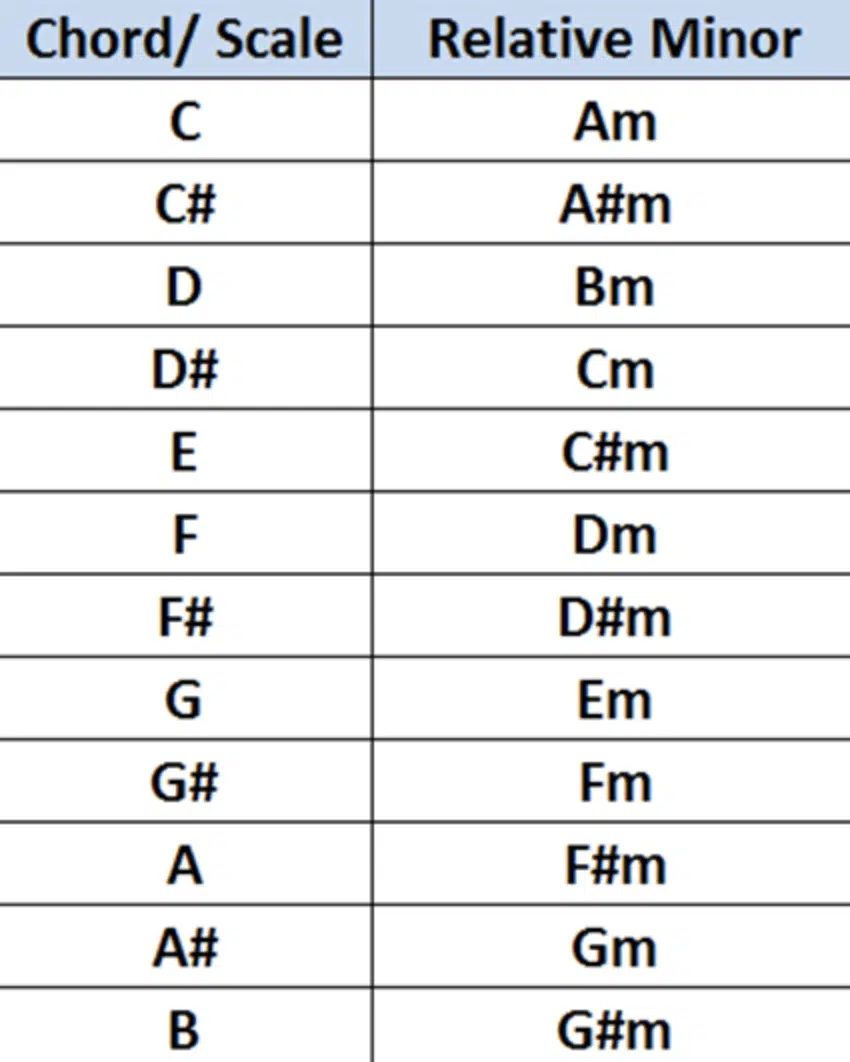
The relative minor of a major key is the key that shares the same key signature but starts on the sixth scale degree.
Conversely, the relative major of a minor key starts on the third scale degree.
For example, A minor is the relative minor of C Major, and C Major is the relative major of A minor.
Since these keys share the same key signature, transitioning between them is smooth and harmonically pleasing.
In the classical era, it was common to end a piece in a minor key with a major chord, known as a Picardy third.
This means that many pieces would end on the relative major of the key they were in, giving a surprisingly uplifting end to an otherwise melancholy piece.
Tips & Tricks for Writing Captivating Chord Progressions
Now it’s time to dive into the truly fun stuff: expert tips & tricks that will help you write chord progressions like a real professional (even without a chord progression chart).
-
Use Chord Inversions
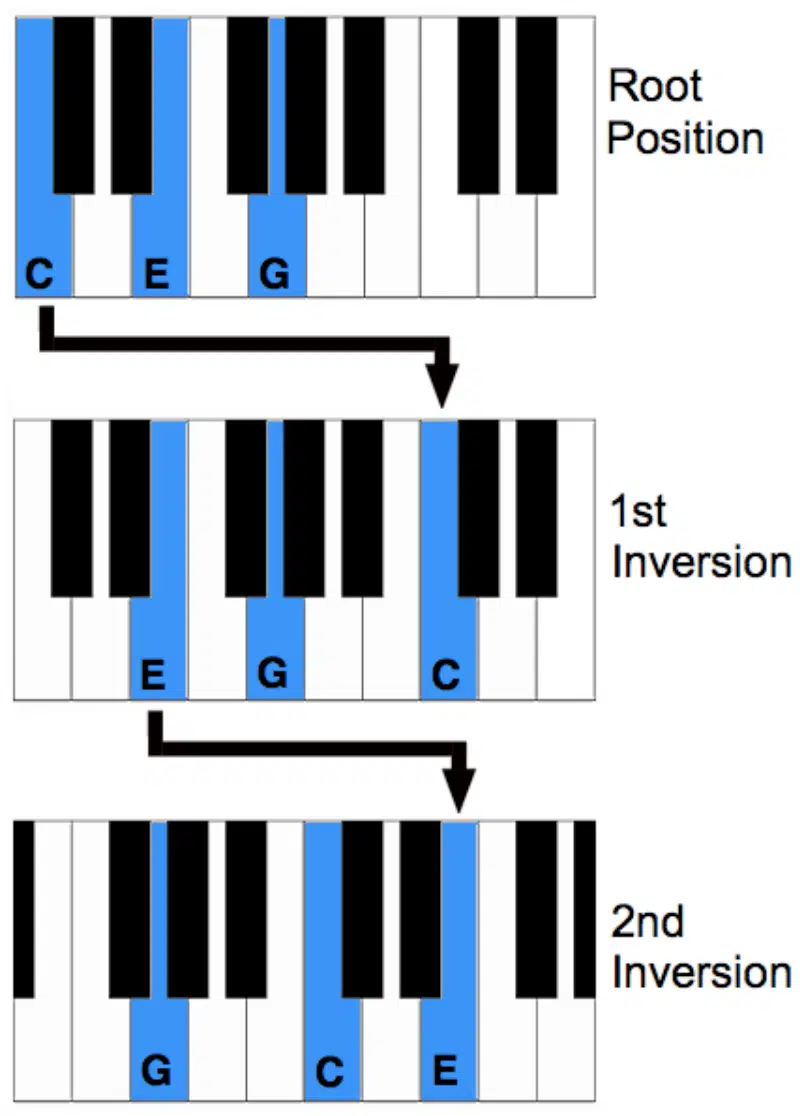
Chord inversions are alternate ways of playing a chord by rearranging its notes.
Instead of playing the root note as the lowest note of the chord, you can use the third or fifth as the bass note.
This can create smoother transitions between chords and add more variety to your progressions.
For example, let’s consider a simple progression in C Major
- C
- F
- G
- C
In this progression, you can use the first inversion of the F Major chord (with A as the bass note) to create a smoother bass line:
- C
- F/A
- G
- C
By using inversions, the bassline now moves stepwise, making the progression sound more connected and cohesive.
Chord inversions can also add harmonic interest and excitement to your progressions.
For instance, using the second inversion of the G Major chord (with D as the bass note) in the same progression results in a more suspenseful sound:
- C
- F/A
- G/D
- C
This is because the bass note D in the G/D chord wants to resolve down to the root note C, creating a sense of tension and anticipation.
-
Borrow Chords from Other Keys
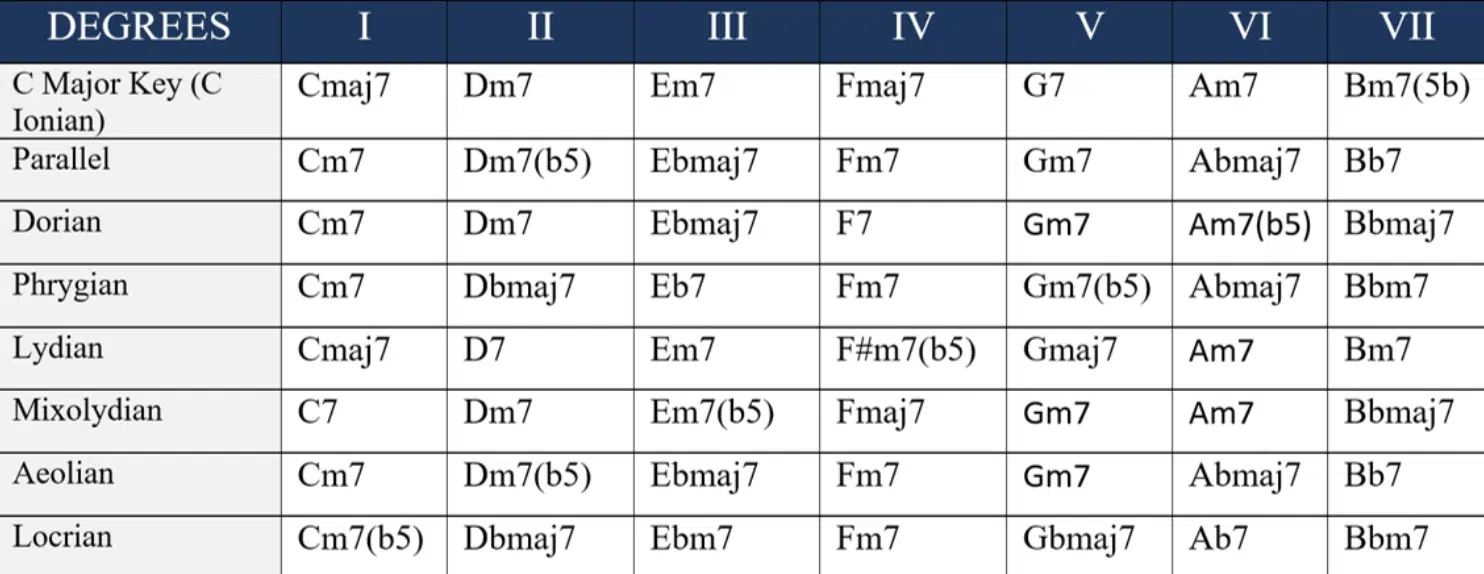
Borrowing chords from other keys, also known as modal interchange, is a technique that can add a fresh twist to your common chord progression.
This involves using chords from a parallel key (the major or minor key with the same root note) or other related keys to create unexpected harmonic shifts.
For example, in a C Major progression, you can borrow the B♭ Major chord from the parallel C minor key
- C
- B♭
- F
- G
- C
This borrowed chord adds a touch of surprise and intrigue to the progression, giving it a unique and engaging quality.
When borrowing chords, it’s essential to maintain a balance between the familiar and the unexpected.
- Too many borrowed chords 一 Can make your progression sound disjointed or chaotic.
- Too few borrowed chords 一 May not provide the desired effect.
Play around with different borrowed chords and find the right balance for different chord progressions.
Utilize Tension & Release
Creating tension and release in your chord progressions is a powerful way to keep your listeners engaged and emotionally invested in your music.
Besides the aforementioned chord types and scales, this can also be achieved by using various techniques, such as:
-
Suspended Chords
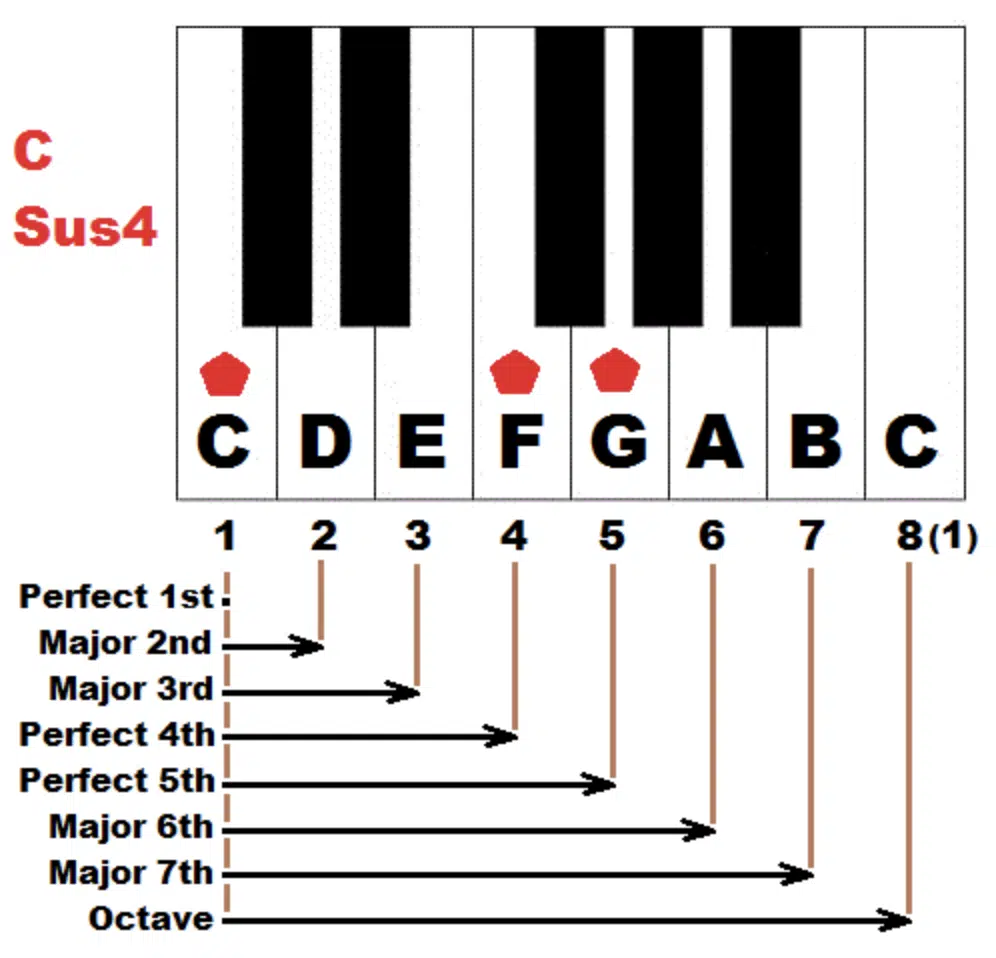
Suspended chords (sus2 and sus4 chords) replace the third note of a chord with either the second or fourth note of the scale, creating a sense of tension.
-
Non-Diatonic Chords

Chords that are not part of the key you’re working in can create tension when used in your progressions. Try incorporating them for some additional flare, surprise, and intrigue to your pieces.
-
Chromatic Movement
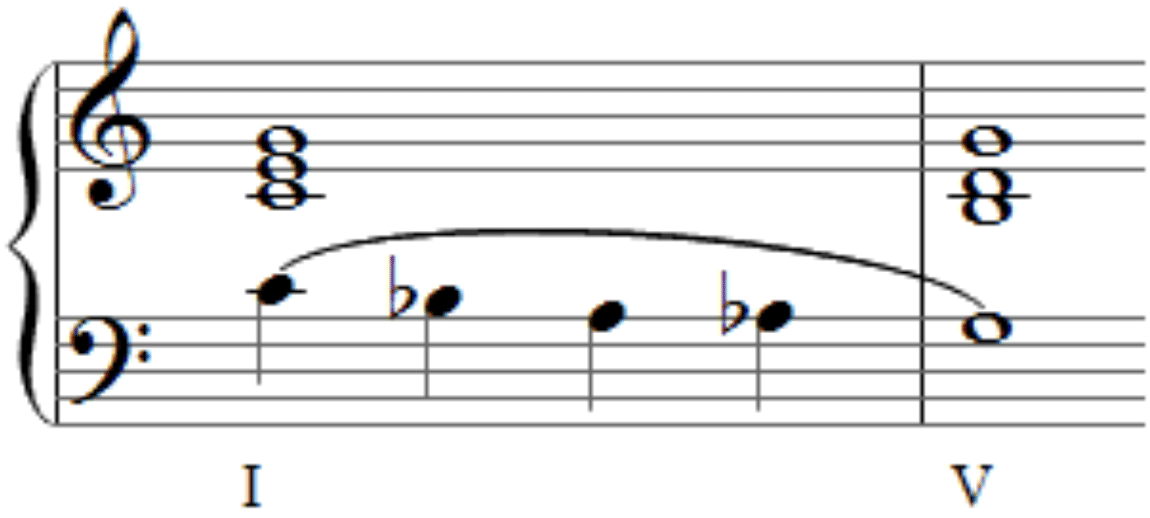
Introducing chromatic movement in your common chord progressions can also create tension and release. Chromatic chords are those that include notes not found in the diatonic scale of the key.
Varying Chord Lengths & Rhythms
Varying the length and rhythm of your chords can add interest and diversity to your chord progressions.
By breaking away from a consistent pattern, you can create more engaging and dynamic music.
Side note, if you’re wondering what the difference between rhythm and beat is, we’ve got you covered.
By understanding the difference, you’ll soon become a master at creating major chord progressions.
Here are some ways to vary chord lengths and rhythms:
- Use Syncopation: Syncopation is the accentuation of normally weak beats or offbeats. By incorporating syncopated chords in your progressions, you can create a more rhythmic & energetic feel.

- Extend/Shorten Chord Durations: Instead of maintaining a consistent duration for each chord, try lengthening or shortening some chords.
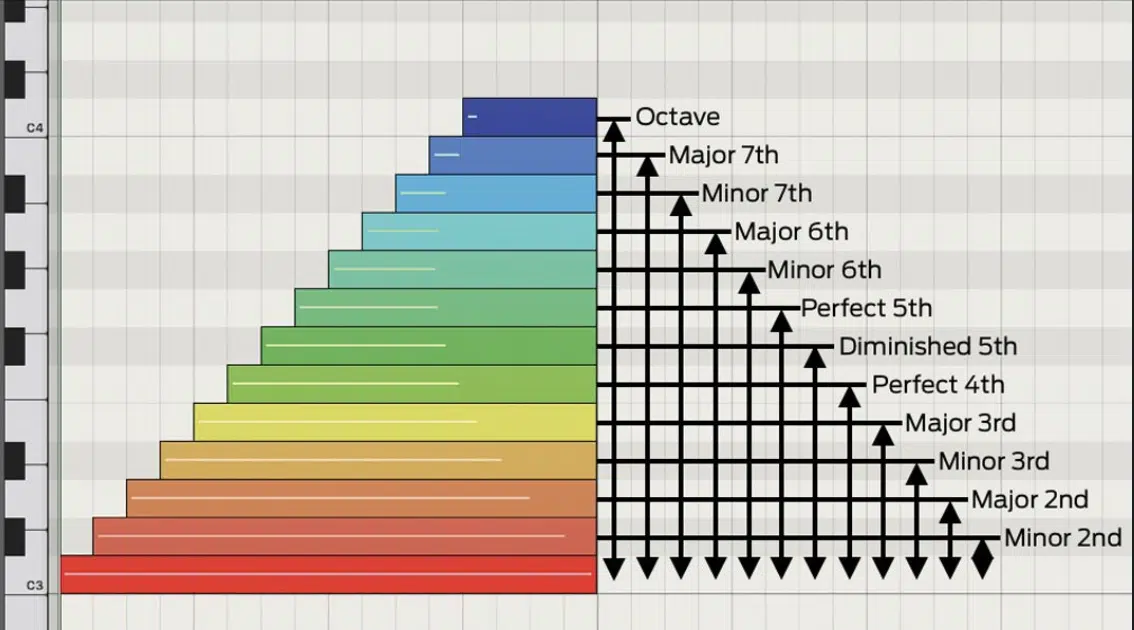
- Combine Different Note Values: Use a mix of whole notes, half notes, quarter notes, and eighth notes in your chord progressions to create rhythmic variety and interest.
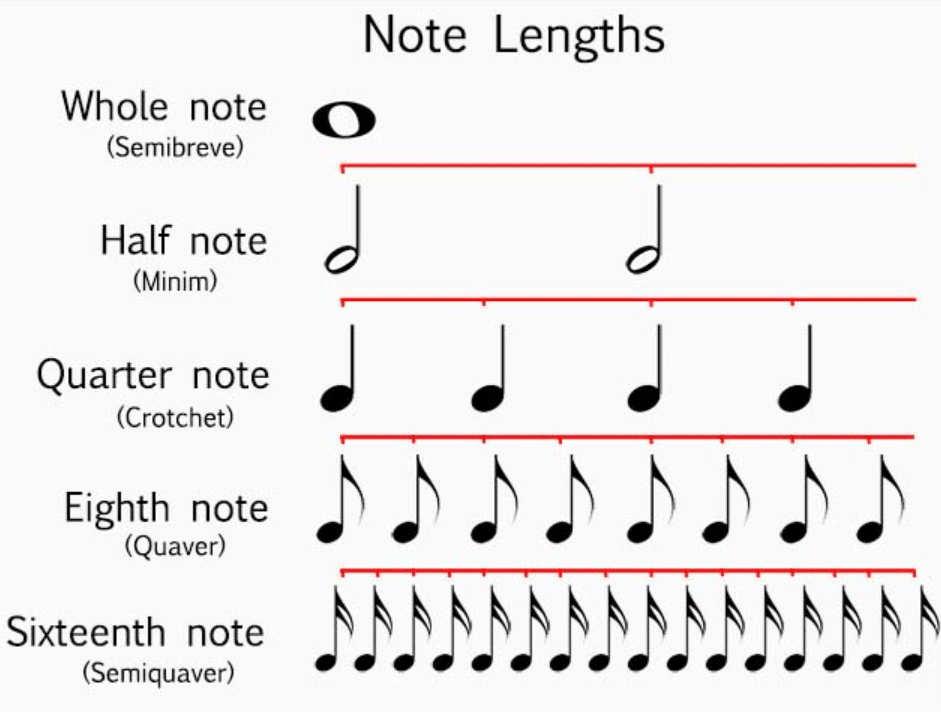
- Change Time Signatures: Experimenting with different time signatures, such as 3/4, 6/8, or 5/4, can also introduce new rhythmic possibilities and give your chord progressions a unique feel.
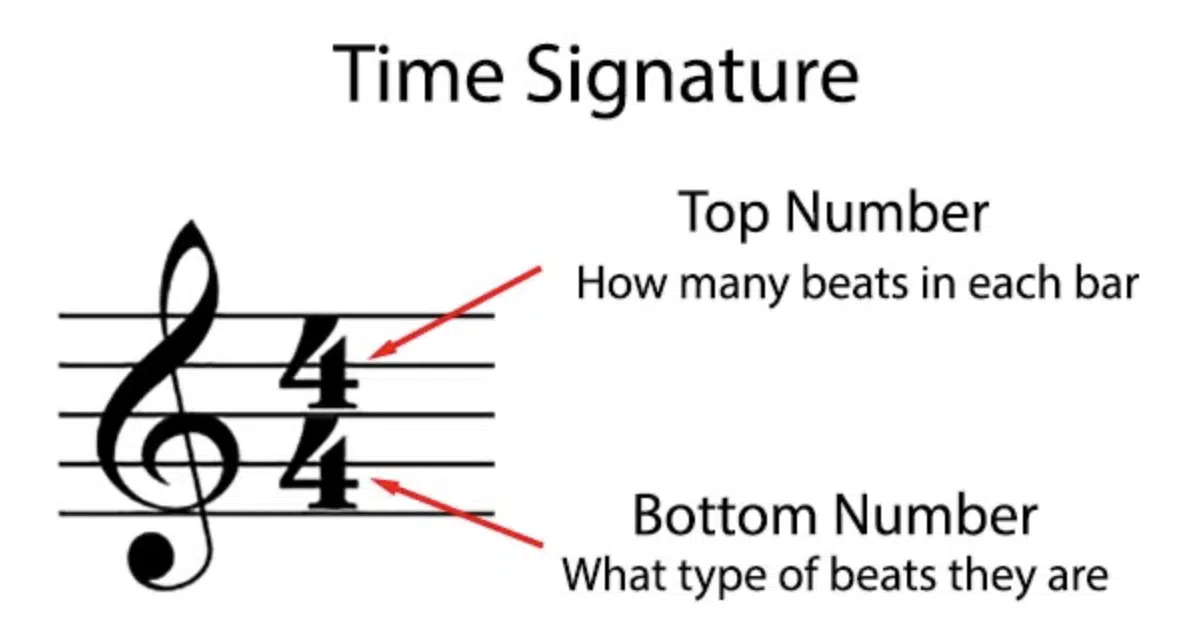
Use Chord Substitutions
Chord substitutions are a technique where you replace one chord in a progression with another that has a similar function or shares common tones.
This can add harmonic interest and variety to your progressions, so it’s beneficial to get familiar with them.
Some common chord substitutions include:
- Diatonic Substitutions: Replace a chord with another diatonic chord that has a similar function.

For example, you could replace the IV chord with the ii chord, as both chords share two common tones and have a subdominant function (e.g., C – Dm – G – C instead of C – F – G – C).
- Tritone Substitutions: Replace a dominant chord with another dominant chord a tritone (three whole steps) away. This is commonly used in jazz progressions.

For example, instead of using G7 in a C Major progression, you could use Db7 (C – Db7 – C).
- Chromatic substitutions: Replace a chord with a chromatic chord that shares one or more common tones.

Use these chord substitutions to create some variety, mystery, and uniqueness in your tracks.
Major Chord Progressions: Final Thoughts
The world of major chord progressions is as diverse and endless as music itself.
So, what’s the next step? Keep experimenting, keep creating, and most importantly, keep learning.
To further assist you on this musical journey, make sure to examine and play around with these free advanced MIDI chord progressions.
This mind-blowing pack, which contains 24 unique & impressive chord progressions can help you dive deeper into the world of major chord progressions.
It will give you valuable insight into the structure of chord progressions as it offers expertly crafted sequences.
Therefore, they can help you understand how different chords interact, lead, and resolve.
Whether you’re working on a trap banger or country ballad, these progressions can become your secret weapon to crafting memorable and emotive music.
Remember, the key to mastery is practice and exploration.
Don’t be afraid to experiment with different progressions, play around with various chord types, and push the boundaries of what you know.
The more you explore, the more unique and expressive your music will become.
Until next time…







Leave a Reply
You must belogged in to post a comment.